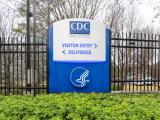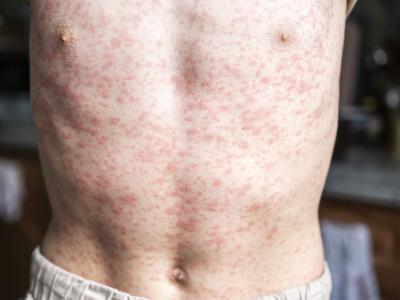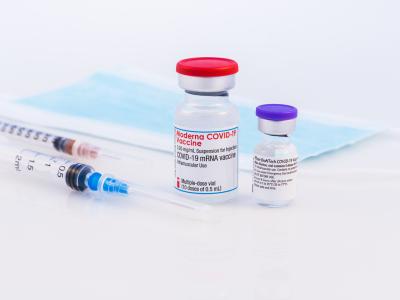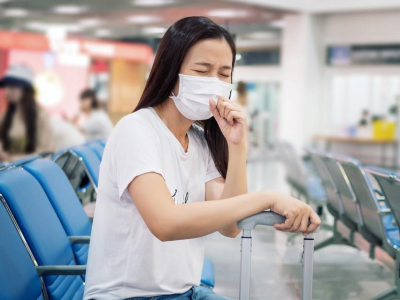Nov 18, 2009 (CIDRAP News) – Leaders of the US Senate Homeland Security Committee sharply critiqued the federal government's H1N1 vaccination strategy yesterday, saying health officials should have recommended targeting only the highest-risk groups as soon as the vaccine delays came to light.
But health officials responded that state and local public health agencies needed flexibility to allocate vaccine supplies as they saw fit. And state and local immunization experts contacted by CIDRAP News today agreed, saying flexibility is necessary given the complexity of matching supplies of different vaccine formulations to the targeted groups.
They also said the root of the public unhappiness over the vaccine shortage lies in overoptimistic expectations created early on by senior federal officials.
At the Senate committee hearing yesterday, Sen. Joe Lieberman, I-Conn., the chairman, and Sen. Susan Collins, R-Me., ranking Republican, argued that the Department of Health and Human Services (HHS) should have called for an exclusive targeting of the most vulnerable groups as soon as it became clear that vaccine deliveries would not come in predicted amounts on the expected schedule.
They referred to the narrower of two sets of target groups identified by the Advisory Committee on Immunization Practices in July. The ACIP, which advises the Centers for Disease Control and Prevention (CDC), recommended H1N1 vaccination for five groups totaling an estimated 159 million people.
But the panel said that if suppliers were short, the vaccine should be reserved for a smaller slice of the population, estimated at about 42 million: pregnant women, healthcare and emergency medical service workers, household contacts of infants younger than 6 months, children ages 6 months through 4 years, and older children at risk for flu complications.
As of yesterday, about 48.5 million doses of vaccine had been made available, according to the CDC. In the summer, HHS officials predicted that 120 million doses would be available in October. Poor growth of the vaccine seed strain has been cited as the primary cause of the slow production.
Senators' critique
Collins told HHS and CDC officials at the hearing that after the vaccine production problems emerged, "I just don't understand why the federal government did not then instruct state and local officials to concentrate on this priority group. I believe that the American people will put the highest priority people first gladly, but if they're not getting a revised distribution plan from the federal government, you're creating chaos."
Similarly, Lieberman commented, "My theory is that . . . HHS and CDC should've done a large national announcement of the reduced list of people who should go out and get vaccine."
Dr. Anne Schuchat, director of the CDC's National Center for Immunization and Respiratory Diseases, said the ACIP discussed this option when it met in October. "We asked the question of them, should we go systematically nationwide for that smaller group? There was an active discussion. What we heard pretty consistently was, 'Leave the flexibility to the states and locals; let them decide whether to prioritize.'"
Lieberman pressed the point repeatedly, saying, "I think this is a case where it would've been better to have a national answer and in this case not go for federalism, not let the states and localities make their own decision, because everybody was focused on national warnings about the disease and the need to get vaccinated."
Schuchat responded, "I think we did feel that the state and local authorities were in a better position to know how to best reach the populations tin their midst." She said some states are mainly using regular medical providers, others are focusing more on public vaccination clinics, and others are using a combination of the two.
She observed tat the situation was complicated by the fact that when vaccine first started flowing in early October, nearly all the doses were the nasal spray formulation, which is approved only for healthy people ages 2 through 49 and not for pregnant women.
States targeting highest-risk groups
Kristen Ehresmann, RN, MPH, immunization director at the Minnesota Department of Health in St. Paul and an ACIP member, said today that a number of states have been targeting the smaller set of priority groups on their own, even without a special national recommendation to that effect.
"That's what we're doing, and I know that's what Wisconsin did, though they've opened it up more recently," she told CIDRAP News.
When the ACIP discussed the target groups, she noted, members talked about the danger of narrowing the target groups too much. "You're always in this really difficult balancing act, whether it's seasonal or H1N1. If you get in a position where you don't have enough vaccine and you start limiting groups, then often what happens is when the supply loosens up, you don't have the response from the people that are waiting. They don't always avail themselves of the vaccine."
Referring to the lawmakers' critique, Ehresmann added, "It's probably a case where people that aren't involved on a daily or yearly basis . . . don't recognize all the challenges that you face when trying to make these decisions. It's kind of a lose-lose when you're looking at it."
Jeffrey Duchin, MD, chief of the communicable disease epidemiology and immunization section for Seattle and King County Public Health in Washington, agreed that it would not have been helpful for federal officials to narrow the vaccine target groups beyond the existing guidance.
"I think that the guidance as it existed was sufficient and adequate to allow those people at highest risk to get vaccinated," he told CIDRAP News. "I don't think it would've been useful to further limit the target groups. One reason is that the ability to deliver vaccine to high-risk patients in a population is a function of the availability of a number of different formulations and local demand among target groups and the ability to access those groups in a timely way."
Duchin, who is an ex officio ACIP member, agreed that many states have already been targeting the smaller set of high-risk groups.
"We basically recommend that our local providers do what makes sense in their practice setting, based on patient risk and the formulations on hand," he said. "It doesn't make sense to prioritize infants when you don't have the infant formulation available. There are a lot of complications based on the multiple formulation, the age indications, and underlying conditions that make it very difficult to start cutting the risk groups too finely."
Ehresmann and Duchin noted that it's hard to say what other approach might have improved the H1N1 vaccine situation. Some have mentioned the idea of targeting the highest-risk groups one at a time, but they cited problems with that.
"I don't know whether that would work, because of the [different] formulations," said Ehresmann. "It's not like you get X amount of vaccine that can be given to anyone. The nasal spray can't be given to pregnant women. There are limits to that."
Duchin agreed, noting that a shortage of thimerosal-free vaccine could hinder reaching some groups. He added that it's not known at this point who is actually at highest risk from the virus.
Excessive promises
He and Ehresmann both cited overpromising of vaccine supplies as the key reason for public discontent over the situation.
"I think the key issue is managing expectations," said Duchin. "Although it's quite remarkable that we have any vaccine now, that is not appreciated and the focus is on the fact that we don't have as much vaccine as we'd like at this time."
"In my mind, the biggest problem was the expectation set at the federal level, above CDC," said Ehresmann. "There was so much talk about all this vaccine that was going to be available; there was no mention of all vagaries of vaccine manufacturing. . . . If they had framed this that we'd be very lucky to get a vaccine, then when it came even in small quantities, it would've been a victory and a delight, instead of a shortage."
At yesterday's hearing, Schuchat acknowledged that too much was promised: "One thing I think we say was a mistake was [that] some of our communications led to the expectation that availability would be higher than it has been."
However, she said recent CDC surveys indicate that the public won't give up on getting the vaccine. "I have tremendous faith in the American public. I hate that they've had to wait, but our surveys tell us that of those who couldn't get it, nine out of ten will try again."
She also commented that CDC surveys suggest "that we're reaching the [vaccine] priority populations in much higher levels than others."
In other testimony at the hearing, Dr. Nicole Lurie, HHS assistant secretary for preparedness and response, said the shortfall in vaccine deliveries last week had to do with Hurricane Ida and problems with temperature sensors, not production problems. Officials had expected about 8 million doses, but only about 3.6 million were delivered.
Lurie said that, because of "the remnants of Hurricane Ida," some manufacturers' insurers didn't want them to ship vaccine, causing a delay. In addition, the temperature sensors for some vaccine lots signaled unsafe temperatures, forcing extra testing, she said.
See also:
Senate Homeland Security Committee information on Nov 17 hearing, including links to statements
http://hsgac.senate.gov/public/index.cfm?FuseAction=Hearings.Hearing&Hearing_ID=44db9053-7722-455d-a2f2-9531244f5023
Jul 29 CIDRAP News story "ACIP targets up to 159 million Americans for H1N1 vaccination"


















